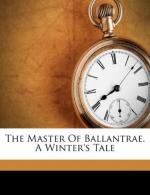|
This section contains 158 words (approx. 1 page at 300 words per page) |

|
The phenomenon of brotherly antagonism is as old as the biblical Cain and Abel story. Also, the history of Scotland is rife with tales of families that were divided over the Jacobite rebellions of 1715 and 1745. Such familial conflict also reflects the famed intransigence of the Scottish temperament.
Further back in English literature, however, John Fletcher and Philip Massinger's play The Elder Brother (c.1637) deals with such a fraternal hostility, though in a considerably less violent manner than Stevenson does.
As to the whole subject of the 1715 and the 1745 uprisings, probably the nearest precedent (and very likely a strong influence) was Walter Scott, who treated the subject with remarkable objectivity in such works as Waverley (1814) and Rob Roy (1818). In accord with Scott's view, Stevenson appears to set forth the thematic truth that all combat, in howsoever good a cause, is fraught with danger and always costly (the...
|
This section contains 158 words (approx. 1 page at 300 words per page) |

|




